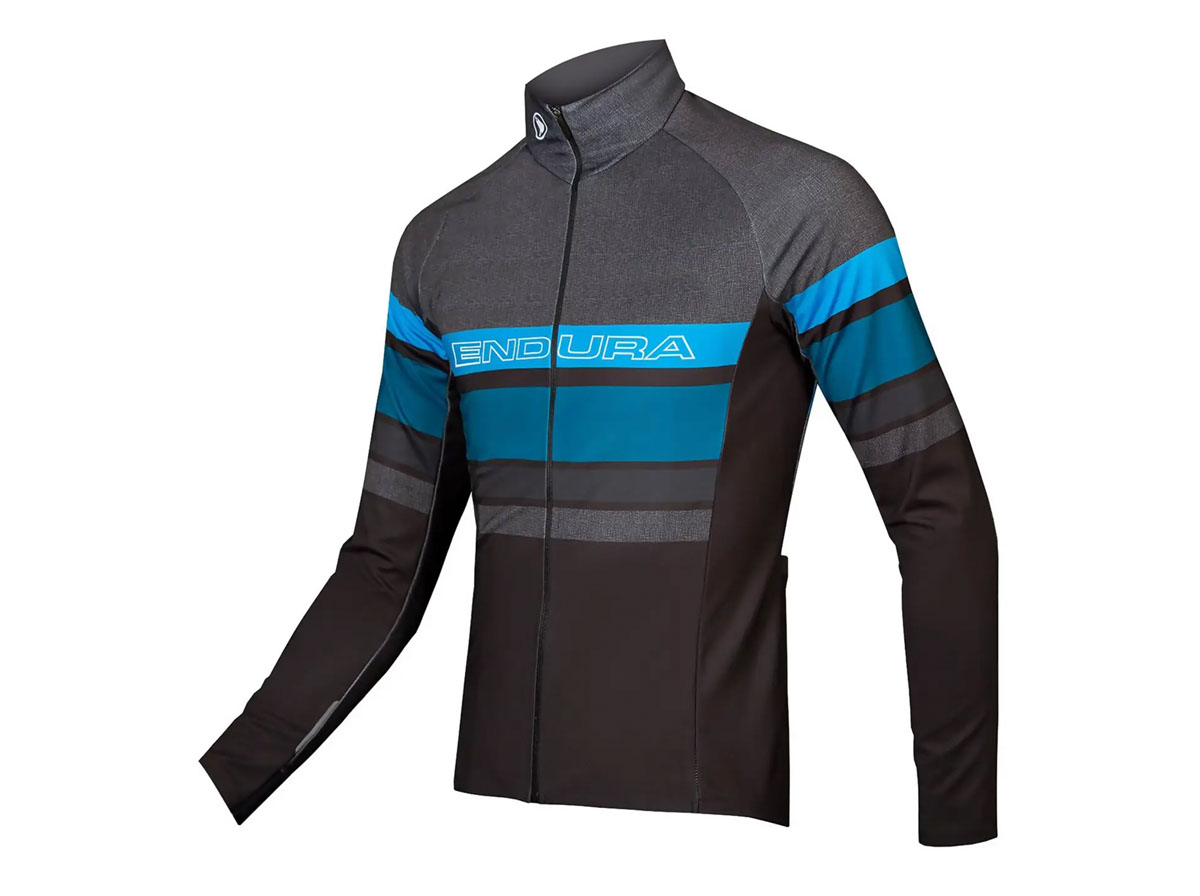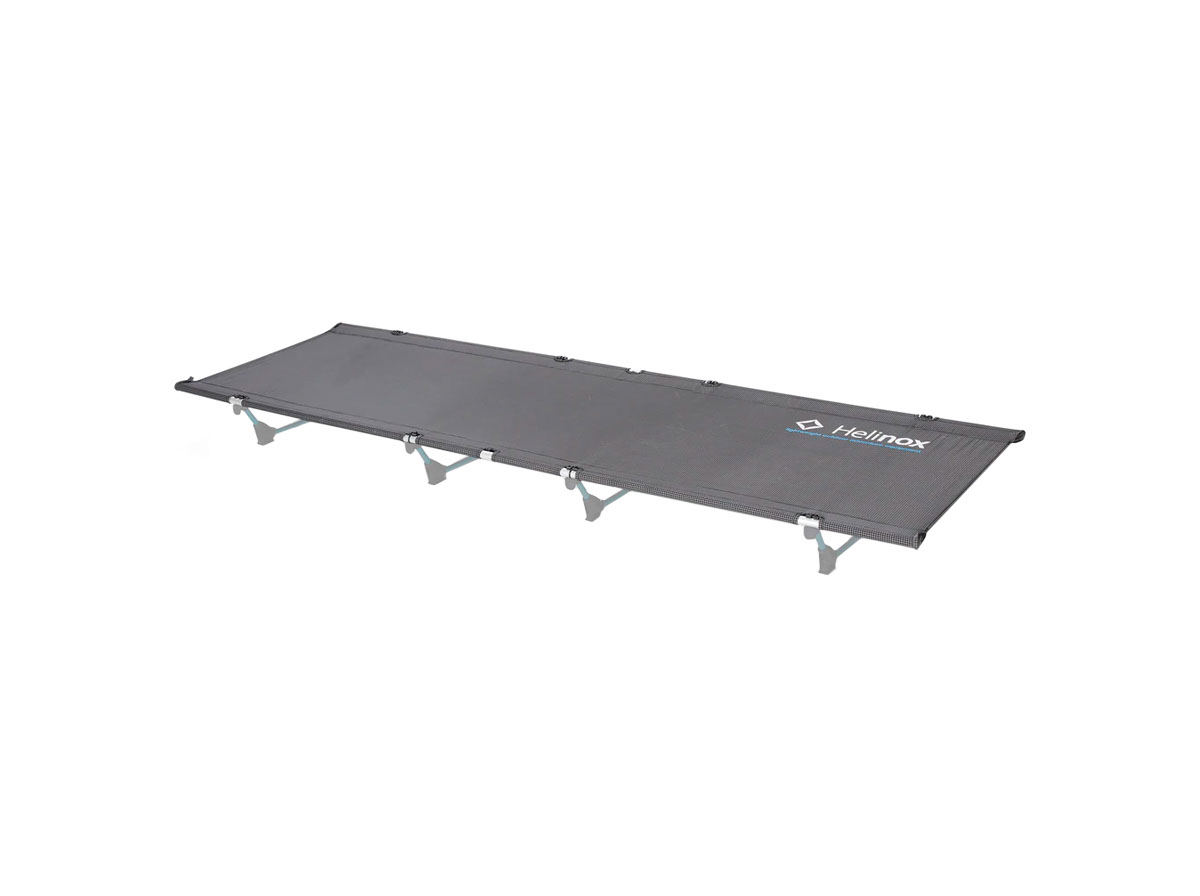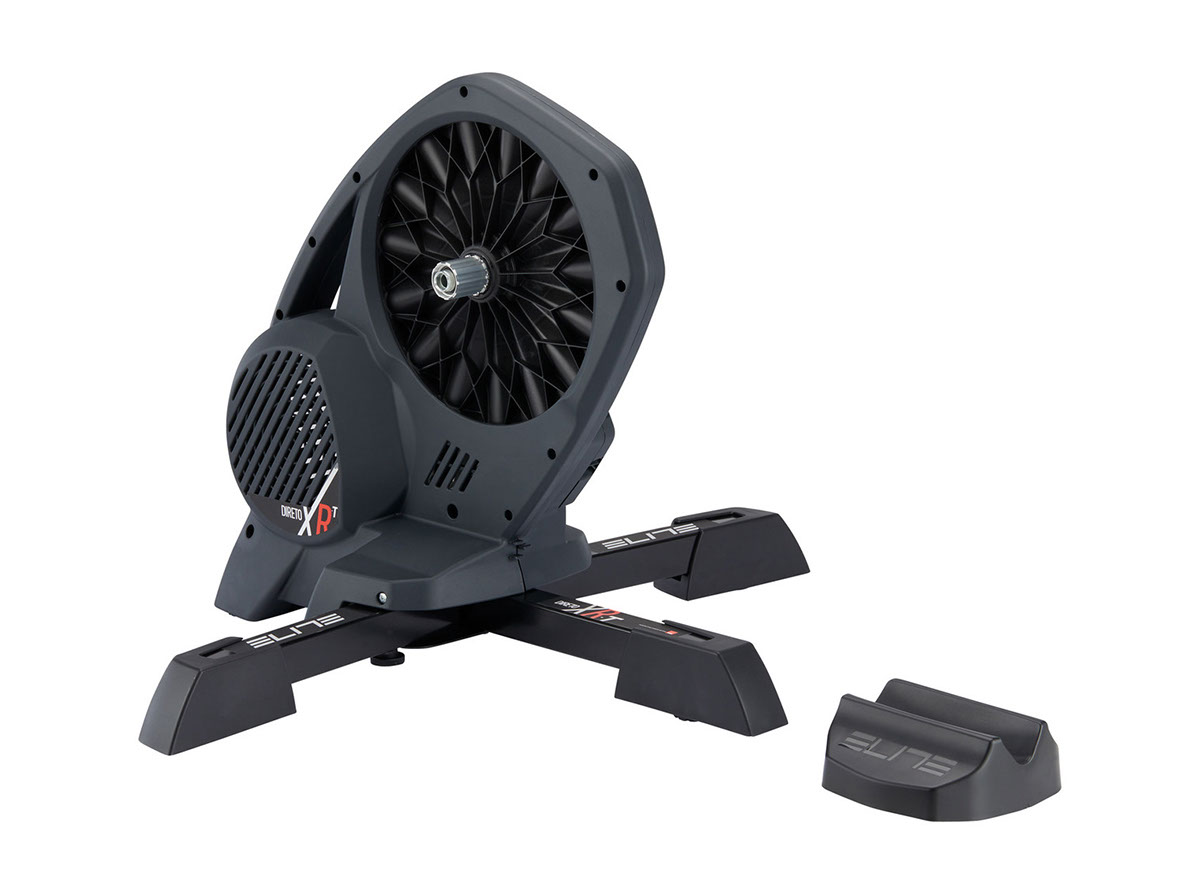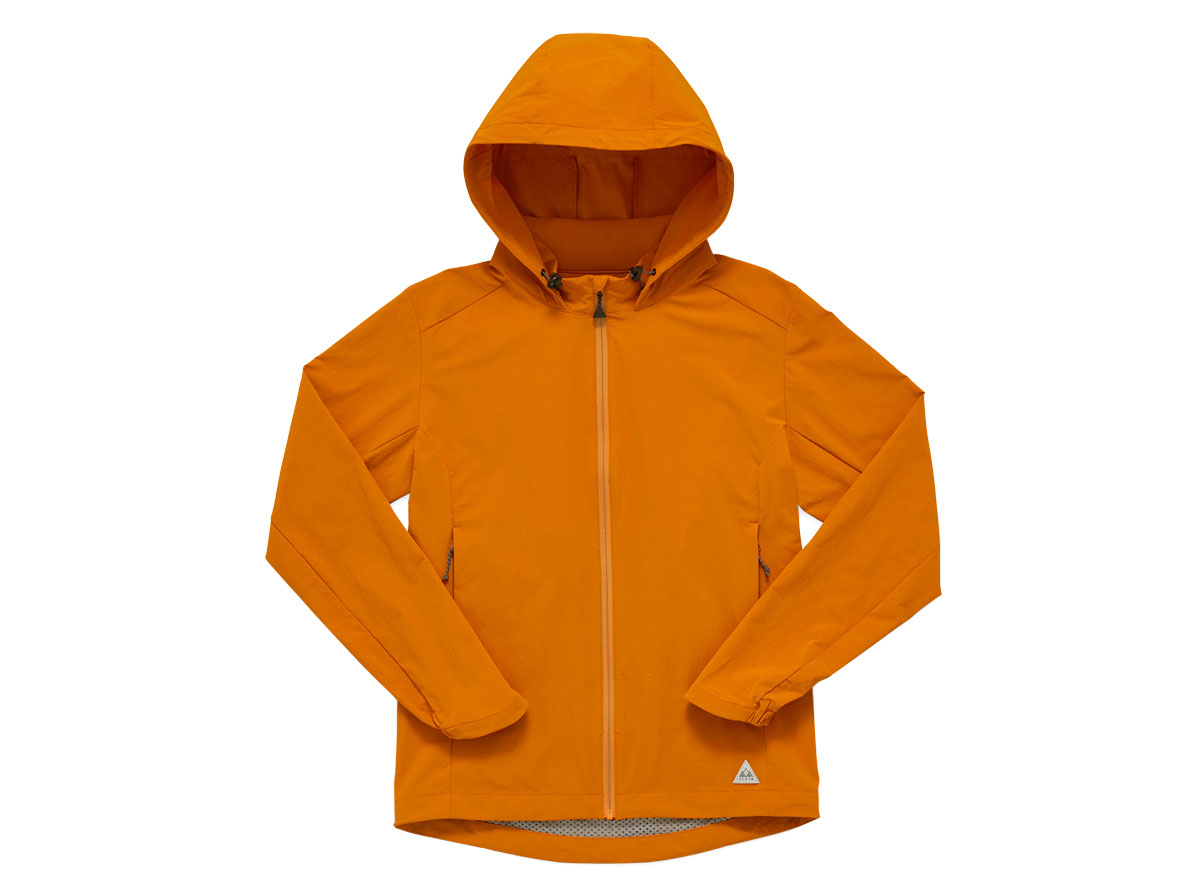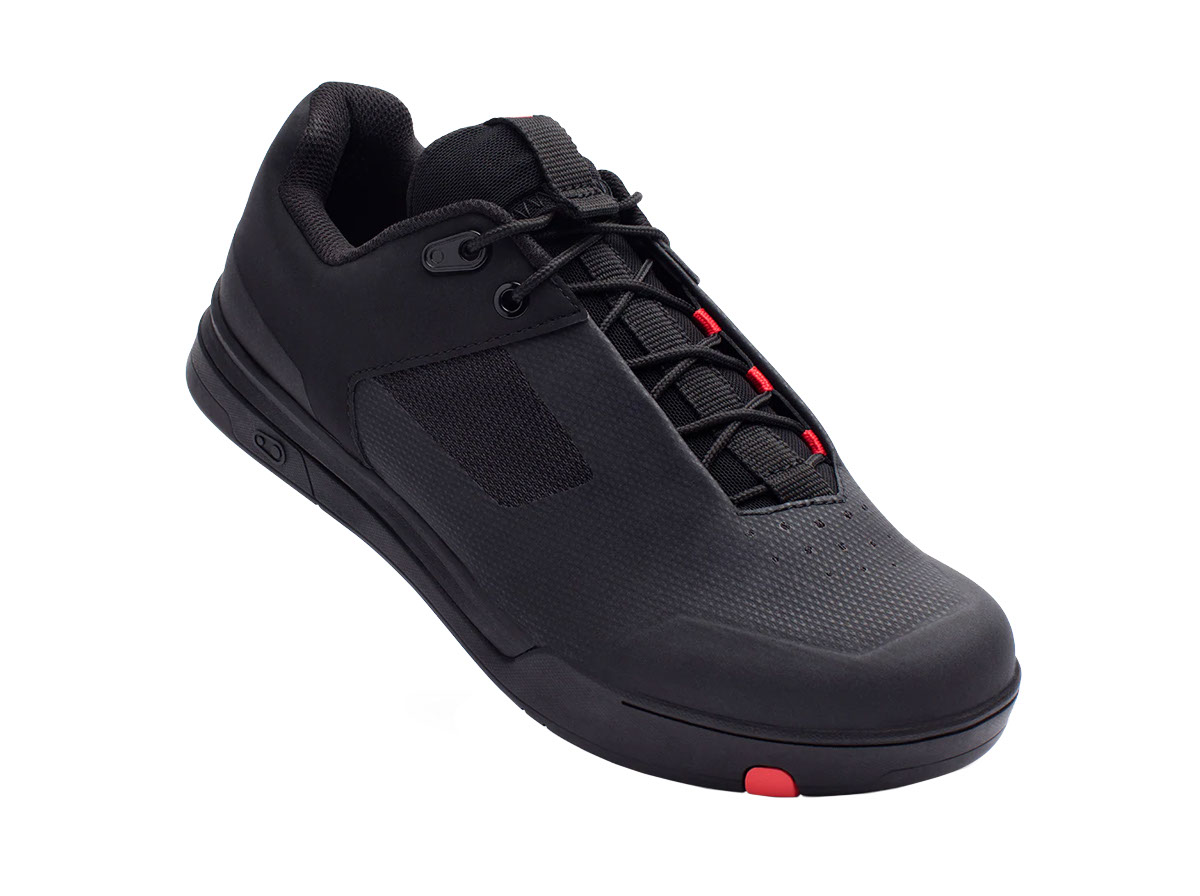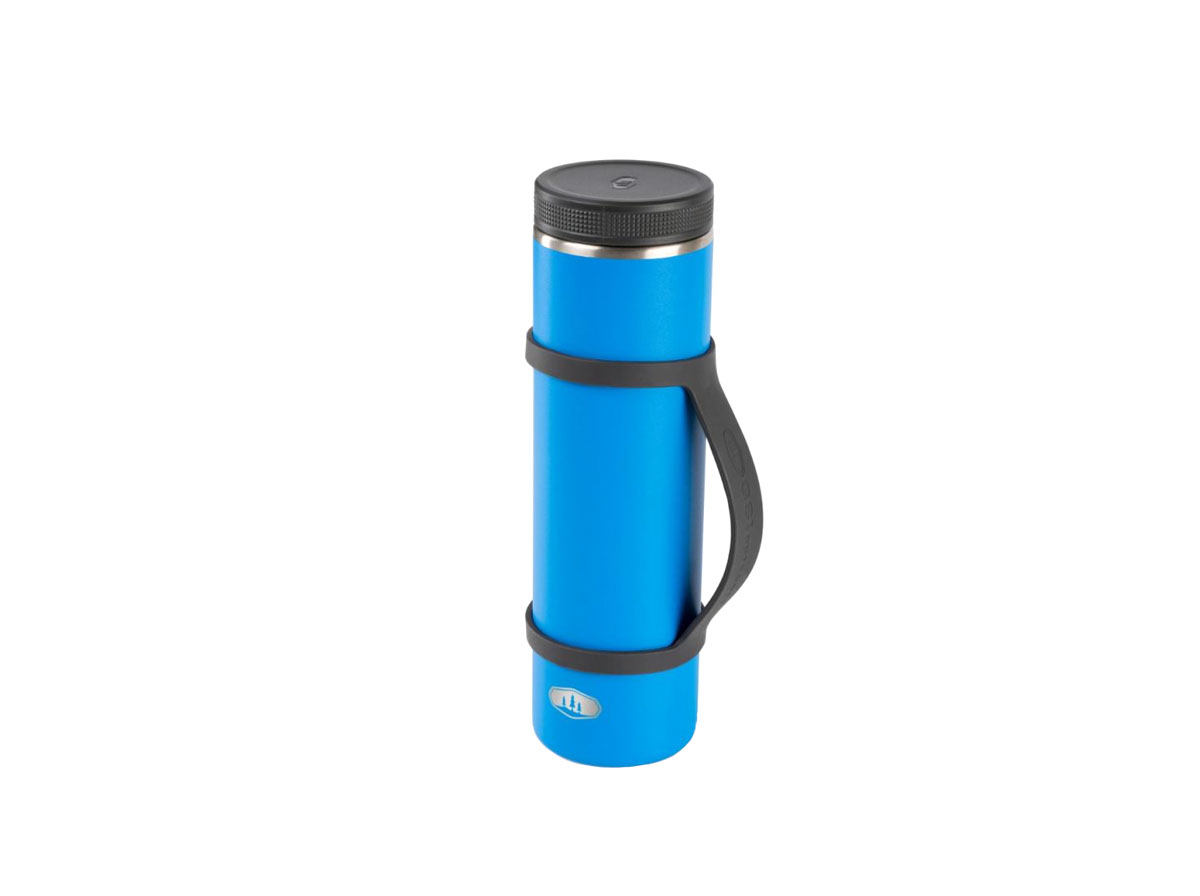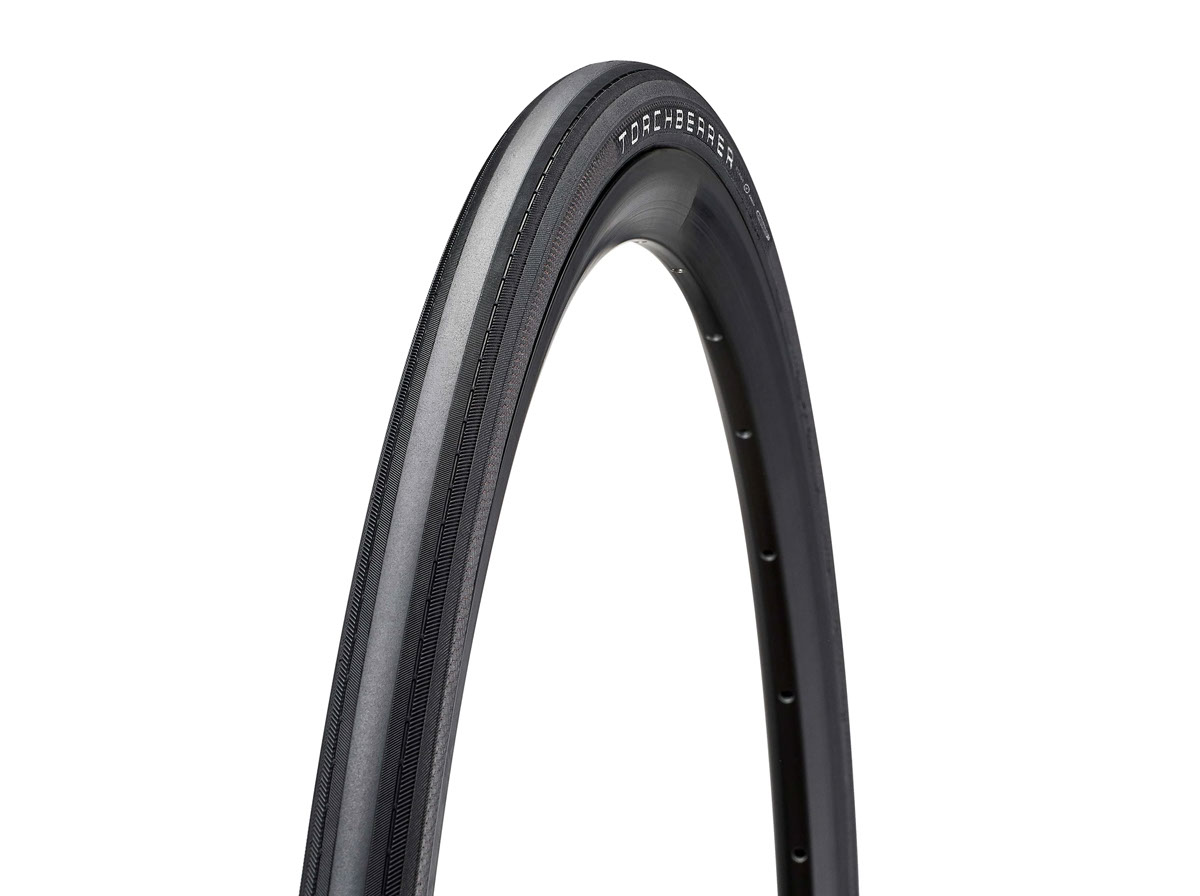Geared Up: Saying Hello to Spring
Endura Pro SL HC Windproof Jacket, $170
I find some of the hardest conditions to dress for are when it’s just above freezing. From 32°F to about 45°F, I find that I’m either underdressed and freezing cold, or I’m way overdressed and pouring sweat. One good way to find that comfortable middle ground is with a windproof jacket that is both highly breathable and not too warm, and that’s exactly what I’ve found with the Endura Pro SL HC Windproof jacket. It’s a comfortable piece with a fairly tight fit but a good amount of stretch so I never felt constricted. It features three drop-in exterior pockets with a zip pocket for keys, and the wrist cuffs are nice and tight so I didn’t struggle to get my gloves over them. The inside has a thin, fleecy lining for a bit of warmth and a stretchy, woven secondary collar to keep the wind from going down your neck. It’s a very breathable jacket, but I did have to unzip in order to avoid overheating while pushing up steep climbs, even in colder temperatures. Unlike many warmer jackets, the Pro SL rolls up just tight enough that I could stuff it in a jersey pocket for extended climbs.
If it’s well below freezing, I’m going to reach for a warmer jacket, but for the in-between temperatures during shoulder-season road riding, the Pro SL is my go-to. And hey, it looks good too. –DM
Helinox Lite Cot, $280
I’ll let you in on a little secret: I sleep horribly when camping. Even when I’m exhausted and half-drunk, I’m lucky to get a few hours of real sleep during the night.
The Helinox Lite Cot, however, has brought me the best nights of camping sleep I can remember. You might know Helinox from its slick camping chairs, but the Korean company offers all kinds of interesting camp furniture, among them the Lite Cot. What is it? Well, it’s a cot, and it’s lite. I mean light. Specifically, it weighs a little over 2.5 pounds and packs down to a cylinder five inches in diameter and about 20 inches long, so roughly the same as a two-person tent. When deployed, the Lite Cot is 72.5 inches long and lofts you five inches above the ground. I’m six feet tall and found the cot to be a perfect fit; if you’re taller than me, the Lite Cot might not work well for you. The Lite Cot is easy to assemble and disassemble, taking me just a couple of minutes to put it together and less to pack it up.
To be clear, the Lite Cot is not a replacement for your sleeping pad. It is pretty comfy on its own, but I wouldn’t want to spend an entire night on one without a pad of some sort, both for insulation and comfort. I used my closed-cell foam pad and my inflatable pad, and both are good options, but my foam pad was a little narrow — the aluminum poles making up the structure would dig into my arms. But with the inflatable pad, I felt more like I was sleeping in a real bed than anything else. It’s hard to describe just why this combination is so comfortable. I think it’s both the added squish of the cot and pad together combined with being a few inches off the ground. It feels decadent. I love it.
Because of the Lite Cot’s weight and size, I think the best application for it is van-supported or fully supported tours or events in which you’re not carrying your sleeping gear on the bike. You certainly can strap the Lite Cot to your rack and take it with you on a tour — I did, and on one of the roughest trails I’ve ever been on, and it was worth it. But really, most bike travelers are looking to these pages for ideas on how to save space and weight, not add to it.
On a recent camping trip, I realized another benefit to the Lite Cot: there were no flat spots where we were camping, it was all one big hillside, so I used large, flat rocks to support the downhill struts on the cot and made myself a nice, level sleeping surface. I slept soundly under a full moon that night. (My camping partner slept with his legs pointed downhill, and his pad punctured in the night, the poor sap.)
As for durability, the cot’s fabric feels very thin and delicate, and it gives quite a bit when you sit on it. But after several months of use, it hasn’t shown any wear, and the fabric’s tension feels exactly the same. The Lite Cot’s maximum capacity is 265 pounds, so I’m at no risk of overloading it. Its structure consists of aluminum DAC poles, which Helinox uses in its other camp furniture and which is used in many ultralight tents. It’s reliable, bombproof stuff. At $280, the Lite Cot is squarely in the luxury category. But can you really put a price on a good night’s sleep? –Dan Meyer
Elite Direto XR-T Cycling Trainer, $800
Keeping up fitness, or at least rebuilding strength and stamina, before a tour is important for minimizing injury on the road. If your tour is in the spring or early summer, though, and you live in a climate that has long, cold, icy winters like I do, getting out on the bike can be uncomfortable and sometimes dangerous. While riding an indoor trainer isn’t the most inspiring, it’s a helpful way to keep the legs moving. But not all trainers are created equal.
The Direto XR-T is the nicest trainer I’ve ridden, but not the most expensive. My previous trainer is a good $300 more, but its connectivity to the training apps I was using felt lacking, the ability to hold a level of resistance was inconsistent, and when I first used it for my TrainerRoad review, I often got emails from the app letting me know they saw issues on their end with my power output. Once I switched to the Direto XR-T, those problems all went away. The one thing my previous trainer had that this one doesn’t come with is an extra cassette, so I used the cassette that came with the old one. (If you don’t want to take the cassette off your bike and don’t have a spare lying around, the Direto XR comes with a cassette.)
I have used the Direto XR-T as a pedal machine while watching movies, a training device with TrainerRoad, and as a video game with Zwift. Each of these worked better than my old trainer. I was impressed with how responsive it was — Elite claims the Direto XR-T has a +/- 1.5 percent accuracy — in changing its resistance to match either the signals I gave it or the connected app was inferring. For “climbs,” for instance, the Direto XR-T’s large flywheel can simulate climbs up to 24 percent gradient. This is perfect for preparing my sad legs for the intense Alaska tour I am woefully unprepared for.
I’ve never used a power meter on a bicycle, so having a trainer with a power meter is very interesting to see how much power I’m actually putting out in a given effort. It’s both inspiring and humbling. It’s also helpful and somewhat addictive as I got lost in the metrics for a while, trying to keep my power consistent and also beat my previous numbers.
Before I knew it, the roads had thawed and I had successfully made it through my first Montana winter without my legs atrophying. Plus I gained some important knowledge on how I ride, like where my strengths and weaknesses lie with my pedal stroke, endurance, and power. I’m thrilled to get to ride on the road again as things continue to thaw, but the trainer hasn’t been put away and I plan on keeping it set up to check in on my progress. Plus, it’s still a great way to watch some television. –Carolyne Whelan
PNW Lander Jacket, $149
Innovation in apparel is usually relegated to space-age fabrics and qualities like waterproofness and breathability. But pockets? Pockets are … well, pockets are just pockets. Right?
PNW is known as a dirt-focused component brand, but they’ve recently come out with a line of apparel. With the Lander jacket reviewed here, pockets are not just pockets. The Lander’s trio of rear drop-in pockets — like on a road jersey but with sort of a rear kangaroo zipper to access them — acts as a built-in hip pack, thanks to the interior belt. The belt loops through the inside of the jacket in line with the pockets so that, regardless of what you’ve got in there, the rear pockets don’t flap around like crazy. It can seem superfluous, especially if you’re not using the pockets often, but the belt is easily removable and the jacket works just fine without it. But with snacks, tools, spare gloves, and my phone all stashed in the rear pockets and the belt cinched up, the system works astonishingly well. Kudos to PNW for outside-the-box thinking here.
Aside from the anti-flap rear pockets, the Lander is a fairly straightforward, mountain bike–focused softshell jacket. The fit is generous without being overly loose, it has two front zip pockets, and the enormous helmet-compatible hood can be rolled up and stowed so it’s not flapping in the wind. It looks a little funny rolled up, but it’s effective. The collar is pretty short, which means you’ll want to wear a neck gaiter on colder days. The fabric has a modern, crinkly look and feel to it, and it is very, very stretchy. The Lander doesn’t claim to be waterproof or windproof, but the fabric has a DWR coating on it to shrug off showers, and it does cut the chill from a stiff breeze while remaining extremely breathable. It’s a little thicker than my go-to softshell for mountain biking, which has been great for riding in the winter — I can go with one less layer and be just as comfortable. And at $149, it’s an investment but far from what I could consider to be overpriced. –DM
Crankbrothers Mallet Lace clip-in shoes, $150
Okay hear me out: even though the Crankbrother Mallets are designed with enduro and downhill mountain bike racing in mind, there’s so much for a bikepacker to love about them too. For one, there’s just so much more material to this shoe than most clipless competitors I’ve encountered, which acts as really lovely insulation during chilly shoulder seasons and makes for a reliable, durable product guaranteed to withstand the demands of bikepacking. Of course, this pro becomes a con once the weather warms up because these shoes don’t breathe super well.
Compared to a sleeker, gravel-specific style of clipless shoe, I didn’t experience a dreaded “break-in” period wearing these. These shoes are comfortable and ride-ready right out of the box. The rather hefty sole made of Crankbrothers’ mid-friction rubber compound (MC1) provides plenty of support while cruising singletrack, too. Because the Mallets are designed for rugged, steep trails, they’re perfect for hike-a-bike, which I find myself maneuvering quite confidently with these on my feet. The diagonal tread pattern provides awesome friction on dirt and rock and the ramped toe lends to feeling in control whether hiking uphill or downhill. The cleat box is recessed enough that the cleats don’t click-clack as you walk — this made clipping in and out a bit more challenging for me at first, but eventually I got used to it. Regardless, I really enjoy that these both look and feel similar to a skate shoe: a great marriage of comfort, stability, and street style. A nice extra feature is the small pocket on the tongue to tuck laces out of sight while you’re riding. –Ally Mabry
GSI 2 Can Cooler Stack, $30
We don’t give out awards for gear, but if we did, my first nomination would be the GSI 2 Can Cooler Stack. It’s exactly what it sounds like: it’s an insulated cooler that holds two 12-ounce cans of your preferred beverage. And it works as advertised. I used it many times over the course of a hot Utah summer, and every time I opened it, whether I’d been riding for one hour or four, I had two cold ones waiting for me. It’s sized perfectly so that two cans fit without sliding or banging around in there, and it straps to a cargo cage pretty easily. There’s really not a lot more to say about the Cooler Stack. If you love having a cold, refreshing drink when you get to camp or at the end of a hot day’s ride, then this nifty product is for you. –DM
American Classic Torchbearer Tire, $45
A few years ago, the venerable wheel company American Classic went belly-up. Now it’s back, but as a brand for tires. I’ve been riding the Torchbearer Tubeless 700c x 32mm all winter long on my road bike, and I haven’t found any faults. They were suspiciously easy to set up tubeless — I didn’t even need a tire lever to get them on the rims — but they haven’t yet dropped below 50 PSI, even when my road bike has been sitting in the basement for weeks at a time. The Torchbearers roll well, they grip nicely in corners, and they’ve survived Salt Lake City’s winter roads, which is no small feat. When the American Classic tires were first released, these Torchbearers were $30 a pop, which was quite a deal at the time. The tires have since seen a refresh, with American Classic claiming improvements in rolling resistance and durability across the board, along with a price increase to $45 (you can find them a little cheaper at their Amazon webstore). Even at the new, higher price, they’re still a bargain, and American Classic offers a wide variety of styles and sizes, so you’re bound to find a road or gravel tire that will suit your needs for a good price. –DM
